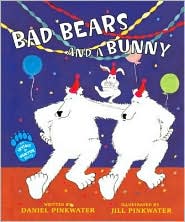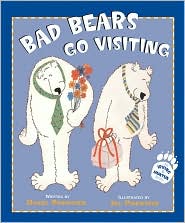
Radar left his teddy bear, and his innocence, in Korea
So, besides being cute and cuddly, and having countless stories written about them, what else do teddy bears do?
They work hard.
They have to.
Because all is not fun and games. Some bears perform above and beyond the call of duty. They're not only loyal, patient, and steadfast -- they are also very brave. They always seem to know just what people need.
Long before Radar appeared with his teddy on M*A*S*H, bears accompanied soldiers to war. They made parachute descents, crossed enemy lines, were even carried by refugees fleeing the Nazis. Whenever there was fear, risk, or uncertainty, people have taken their bears with them.
But one does not have to be on the front lines to experience trauma, or need comfort, solace and love. What about the innocent victims of natural disasters, automobile accidents, domestic abuse, or more recently, terrorist attacks? What about patients with terminal illnesses, or seniors who may be lonely and forgotten? Bears have been only too willing to serve in this capacity, too, thanks to Good Bears of the World (GBW), an international non-profit organization founded in 1969 by the late journalist and radio pioneer, James Ownby.
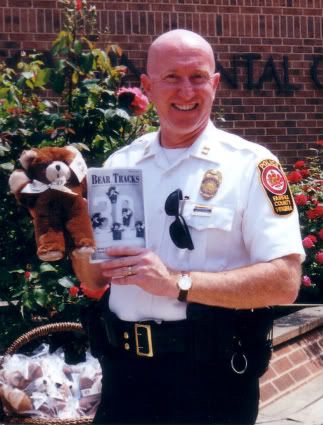
Officer Rudat of the Fairfax County Police Dept.
with the official GBW bear, and a copy of Bear Tracks,
the GBW quarterly journal.
Jim's dream of helping anyone of any age needing a bear's comfort began with a story he read called Bear With Me, about a man who dedicated himself to giving bears to hospitalized children. Jim began to spread the good word about bears from his first headquarters, radio station KNDI in Honolulu, Hawai'i. He visited legislatures, schools, churches and hospitals, made television appearances, and continued to broadcast to about 400 radio stations from various locations around the world.
Wherever he went, he was able to gain support for those in need. People began to form chapters called "dens," made or purchased bears, and then presented them in person. Today, there are dens all over the world, and hundreds of thousands of bears have been donated to hospitals, orphanages, hospices, police departments, social services, and fire and rescue. GBW was there for victims of the Oklahoma City Bombings, 911, and the crash of TWA Flight 800, as well as recent hurricanes, tornadoes and floods. And it is likely that many of the police cars in your area carry bears to comfort young accident victims, thanks to GBW.
Shannon receives a bear from CJ Ross
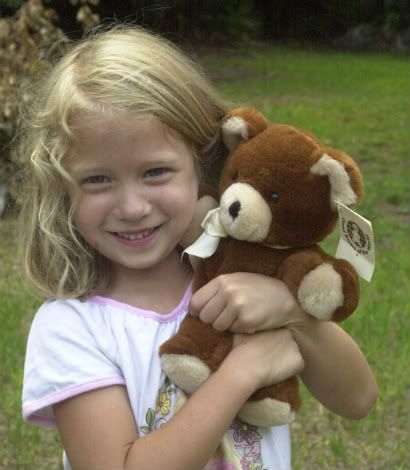
In addition to Good Bears of the World, I'd also like to mention Sir Koff-a-Lot, because he "comes to the rescue" by helping patients recover from open heart surgery. He was specially created by a husband and wife surgical team from Pennsylvania who also happen to be bear collectors.
After surgery, patients are encouraged to cough and do deep breathing exercises every hour or two, to keep their lungs clear and free of infection. Usually a pillow or rolled up blanket held against the chest is used to ease the pain.

Sir Koff-a-Lot can be ordered through Muffin Enterprises
Drs. Lawrence and Carolyn Shaffer, who fully understood teddy's healing powers, created a firm bear with a flat, seamless back that could be held against the incision when the patient breathes or coughs. Sir Koff-a-Lot hastens healing by adding that much needed emotional component. He makes patients feel more secure; some become so attached to him that they take him home when they leave the hospital. We gave my uncle a Sir Koff-a-Lot bear when he had heart surgery, and he fully attested to its effectiveness!
Though the teddy bear was first created as a toy more than 100 years ago, he has proven time and again that he's so much more than fur and stuffing. It is likely that he will continue to find new jobs to perform, new ways to serve. He has already heard millions of secrets, been pulled apart, left behind, dragged in the mud, and suffered every indignity known to man -- yet he remains proud and willing to come to the rescue whenever and wherever he is needed. The next time you see a teddy, better show him due respect. Someday, he just might rescue you. To find out more about GBW, including how to become a member, find the den nearest you, or to make a donation, click here.
To find out more about GBW, including how to become a member, find the den nearest you, or to make a donation, click here.
Or, you can participate in the new Adopt-a-Bear Program -- adopt (purchase) one of the five currently featured bears, and the money will go to providing bears for those in need.
Here is my favorite bear among those currently seeking a new home. She can be yours for only $25 plus shipping!
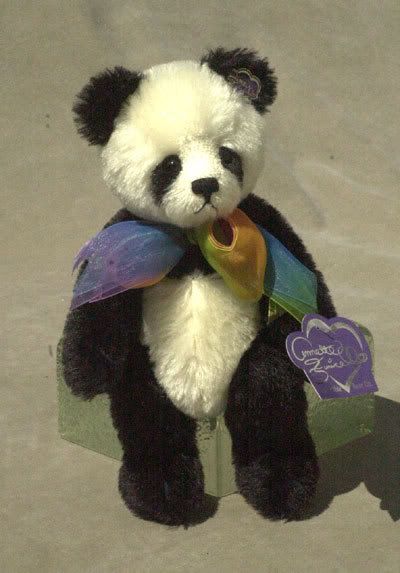
"Cookies and Cream" by Annette Funicello Collectible Bear Co.
9 inches, black and white mohair, fully jointed, original tag
and pin in ear.
How can you resist?

*Thanks to Elizabeth Taylor, co-owner of Agape Bears, official sponsor of the Giving Paws Den in Arlington, Virginia, for the GBW photos.
Viewing: Blog Posts Tagged with: teddy bear picnic, Most Recent at Top [Help]
Results 1 - 11 of 11
Blog: jama rattigan's alphabet soup (Login to Add to MyJacketFlap)
JacketFlap tags: teddy bear picnic, sir koff-a-lot, good bears of the world, Add a tag
Blog: jama rattigan's alphabet soup (Login to Add to MyJacketFlap)
JacketFlap tags: teddy bear picnic, Add a tag
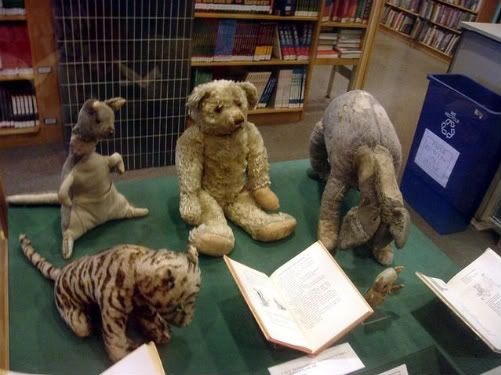
Real Pooh and friends at the History and Social Science Library,
5th Avenue and 42nd Street, New York City
"A little Consideration, a little Thought for Others, makes all the difference."
"Rivers know this: there is no hurry. We shall get there some day."
"If ever there is tomorrow when we're not together, there is something you must always remember. You are braver than you believe, stronger than you seem, and smarter than you think. But the most important thing is, even if we're apart, I'll always be with you."
~ Winnie the Pooh, A.A. Milne On August 21, 1921, Christopher Robin Milne received Pooh for his first birthday.
On August 21, 1921, Christopher Robin Milne received Pooh for his first birthday.
Blog: jama rattigan's alphabet soup (Login to Add to MyJacketFlap)
JacketFlap tags: book reviews, kevin henkes, teddy bear picnic, Add a tag
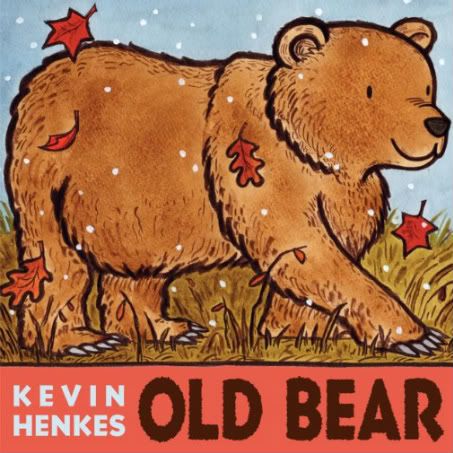
OLD BEAR by Kevin Henkes (Greenwillow, 2008), ages 2-7, 32 pp.
Available: August 19, 2008
Look what's coming out next week!
Another masterpiece by Kevin Henkes.
When I first saw the cover, I could feel the wonder. The bold outline, just the right shade of tawny cinnamon, the bear's rounded face and snout, his warmth and gentle demeanor, and the title - drawn in letters with furry edges.
I knew I would love it before I even opened it.
Maybe it's because, even after 30-something books, Kevin Henkes has never disappointed. He just keeps getting better. How is that possible?

Kevin Henkes in his Madison, Wisconsin, studio, by Joe Koshollek (photo source)
In this breathtakingly gorgeous book, it is snowing heavily, and Old Bear is fast asleep, dreaming of becoming a cub again outside in the world he loves. When we first see him, he's all snug and cozy, inside an ink and watercolour illustration framed by thick, bold lines. His dream turns to spring, with a full-bleed double page spread in vivid pinks and lilacs. "The flowers were as big as trees. He took a nap in a giant pink crocus." The little curled up ursine is so endearing!
Then he dreams of summer, wandering green hillsides: "the sun was a daisy and the leaves were butterflies." In one of the most joyous, perfectly child-centric drawings I've ever seen, the cub is catching blueberries on his tongue, because they are raining from the clouds!
So magical!
Then it's autumn, and "everything was yellow and orange and brown, even the birds and the fish and the water." The cub is up a tree, while the world is teeming with the vibrancy of rust-colored fish and birds.
When it's winter, the cub sits gazing at a world covered with snow and ice. It's radiantly cool and brilliant, with a sky that is "blazing with stars of all colors."
Finally, when Old Bear wakes up, he ventures out into a refreshing spring day, and it's so beautiful that he has to make sure he's not still dreaming.
Just as he did in A Good Day (Greenwillow, 2007), Henkes has created a deceptively simple storyline. The understated, lyrical language sets the stage for the dramatic double page spreads depicting each of the four seasons. Each page turn will surely prompt a Wow response, or at the very least, an excited, Oh!, followed by lots of sighing. It's the perfect example of how the right combination of color and contrast can embody strong emotion.
What else did I like? The front cover of the book is autumn, the back is spring. The front endpapers are chestnut-colored autumn leaves, and the back endpapers are lavendar flowers. The title on the cover is embossed, and the typeface is remniscent of my favorite childhood books by Garth Williams. The words change color, too, with the seasons. Every detail is pitch perfect. But then, it's Kevin Henkes.
Old Bear, which earned a starred review from Publishers Weekly, will be loved by children ages 2-7, and will lend itself nicely to classroom units about nature, colors, animals, and the four seasons. See the HarperCollins activity guide here.
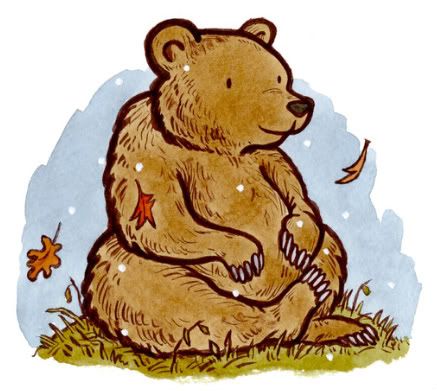
**Interior spread posted by permission, copyright © 2008 Kevin Henkes, published by Greenwillow/HarperCollins, All rights reserved.
Blog: jama rattigan's alphabet soup (Login to Add to MyJacketFlap)
JacketFlap tags: corduroy, teddy bear picnic, don freeman, Add a tag
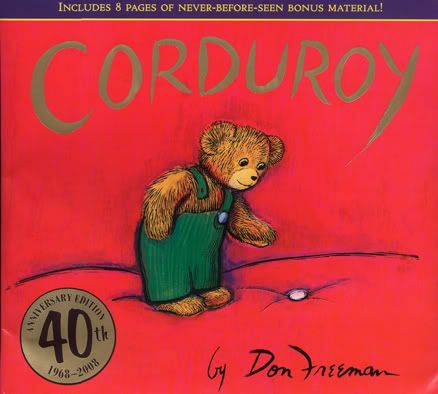
Today we are celebrating a double birthday here at alphabet soup!
You may already know that Corduroy, the bear in search of a button and a friend, is 40 years old this year. But did you know that Corduroy's creator, Don Freeman, was born exactly one hundred years ago today? That's right: August 11, 1908.
Corduroy is certainly one of the most beloved bears in children's literature, along with Paddington and Pooh. Even though there are only two picture books about him, he has managed to stand out among the plethora of other bear books published through the years.
His enduring charm for young readers exemplifies what Don Freeman defined as the essence of a good children's story: simplicity without simple mindedness. This is a story about belonging, being loved for who you are, and friendship. What could be more important than that? And it's told without a hint of didacticism, condescension, or sentimentality.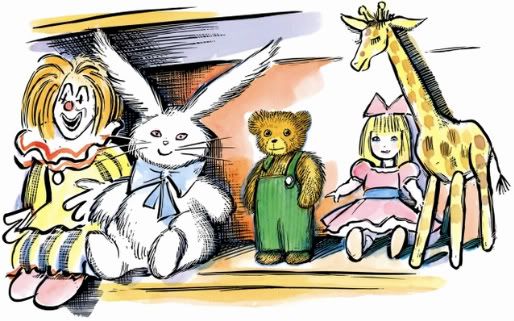
"Corduroy is a bear who once lived in the toy department of a big store. Day after day he waited with all the other animals and dolls for somebody to come along and take him home."
This past spring, Viking released a special 40th Anniversary Edition of this classic with extra-large trim size, embossed cover, and 8 pages of never-before-seen bonus material. It's a beauty of a book, and a must-have for any diehard Corduroy fan.
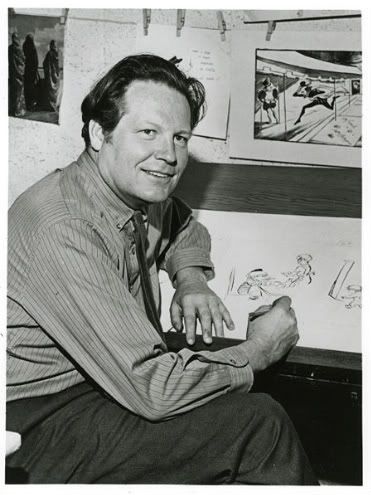
Originally from San Diego, Freeman moved to NYC in 1928 to study art at the Students Art League with John Sloan. He was fascinated by the theatre, and filled many sketchbooks with what he observed backstage on Broadway and all over the city. He supported himself by playing cornet in jazz and dance bands.
One night, while riding on the subway, he became so preoccupied with his sketching that he forgot his cornet on the train. After that, he decided to focus solely on his art. He was supposedly a gregarious sort, with lots of friends, including Louis Armstrong and William Saroyan.
He came to children's books quite casually, co-authoring stories with his wife, Lydia. One of these early books was called Corduroy the Inferior Decorator (as yet, still unpublished), featuring a boy who drove his parents crazy by painting on the walls of their apartment. The name, "Corduroy," was Don's pet name for his son, Roy, who always wore corduroy overalls.
Years after Corduroy was published, Don wrote Linda Zuckerman, his editor when the book was released, explaining how he got the idea:
Of course I can't remember exactly how it started, but I do recall wanting to do a story about a department store in which a character wanders around at night after the doors close. Then I also wanted to show the vast difference between the luxury of a department store and the simple life most people live. The idea of simple basic values was another theme that was running around in the back of my head . . .
Viking first rejected Corduroy, so Freeman submitted it to other publishers. They rejected it as well, but he believed in the story so strongly that he decided to resubmit it to Viking, who finally decided to take a chance on it. 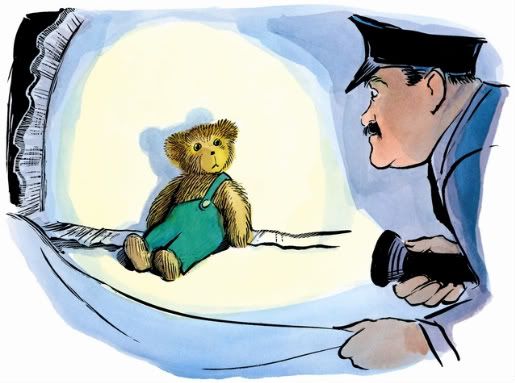
"Hello," he said. "How did you get upstairs?"
The 40th Anniversary Edition contains correspondence between Freeman and his acquiring editor, Annis Duff, an early draft of the manuscript with Duff's editorial notes, newspaper clippings on Freeman's death, and several sketches alongside final illos. Great stuff for those who love process, history, and anecdotes.
I could not find any evidence of whether Freeman modeled Corduroy after a real teddy bear. But I do know that Freeman's rendering manages to touch that hopeful, accepting, innocent child's heart in all of us. Such a small bear in a huge department store! Nobody wanted him because he wasn't perfect. How good we feel when Lisa finally takes him home.
Sadly, Freeman died of a heart attack just before the sequel, A Pocket for Corduroy, was published in 1978. I wonder if he had any idea how many millions of children would continue to take his loveable bear home after that.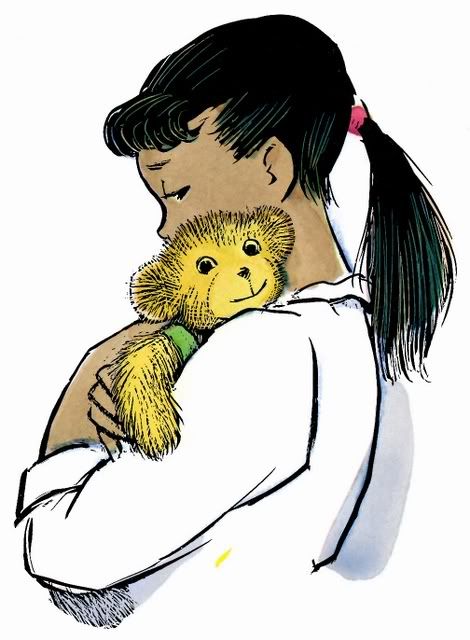
"You must be a friend," said Corduroy. "I've always wanted a friend."
"Me too!" said Lisa, and gave him a big hug."
Happy Birthday, Don and Corduroy!!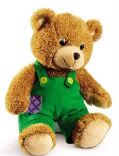 Don Freeman's Official Website is here.
Don Freeman's Official Website is here.
For a reading of the story, click here.
**All interior spreads posted by permission, copyright © 2008, The Viking Press, All rights reserved.
Photo of Don Freeman used in accordance with Creative Commons 3.0 Unported License.
Blog: jama rattigan's alphabet soup (Login to Add to MyJacketFlap)
JacketFlap tags: teddy bear picnic, chicken teriyaki, Add a tag
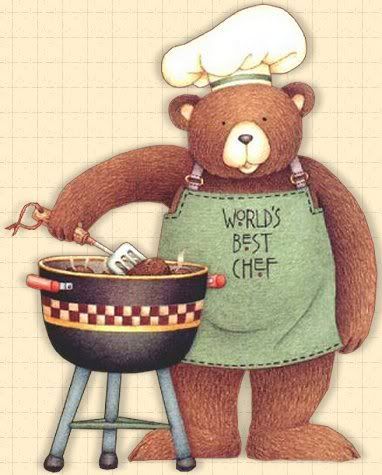
Summer is grillin' time! To those of the gentler persuasion, that means, Yay! we don't have to cook!
Somehow there's just something positively hot and neanderthal about a man wielding giant tongs or a hefty spatula. Let's face it. Only a man can slap down a side of beef with finesse. Yeah. Burn those burgers. Crisp those ribs. Arrr!
Though we love the occasional red meat here at alphabet soup, we tend more towards chicken and fish. Here is a simple marinade for chicken -- perfect for a balmy Saturday night, delicious with brown rice, some grilled veggies (onions, mushrooms, bell peppers, asparagus), and fresh kimchee.
And now, let's hear it for all the hunky He-Man Grill Kings of the world!
Booyah!
CHICKEN TERIYAKI
(serves 4)
2 lbs. boneless, skinless chicken thighs (rinse and pat dry)
Marinade:
1/2 cup soy sauce (I use Kikkoman)
1/2 cup brown sugar
2 T sherry
1-2 T minced garlic
1-2 T freshly grated ginger root
Marinate chicken several hours or overnight in ziploc bag. Rotate occasionally.
Grill approximately 15 minutes or until done.
TIP: Compliment the griller effusively for repeat performance tomorrow night.
Blog: jama rattigan's alphabet soup (Login to Add to MyJacketFlap)
JacketFlap tags: teddy bear picnic, goldilocks and the three bears, Add a tag
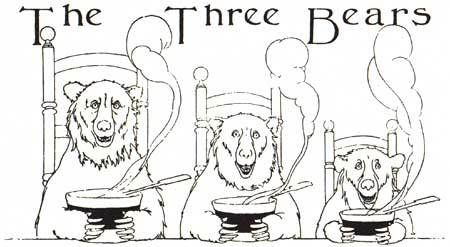
Charles Robinson, 1911
Just in time for the picnic, both Barbara O'Connor and Tadmack have posted this fictional editorial letter to the author of Goldilocks and the Three Bears. It's here, under the cut, for your amusement (original source of letter is unknown). You must read it, especially if you need cheering up today.
1) Why is the Mama Bear's porridge too cold when the Papa Bear's porridge is too hot? Didn't they come out of the same cooking pot? Perhaps incorporate a description of the bowls in question, showing that Papa Bear's bowl exposes less surface area so that the porridge is unable to cool. Is there a science lesson to be taught here? (Mama Bear's bowl must be wide and shallow; etc.) Or perhaps Mama Bear's bowl is made of thin porcelain, and Papa Bear's bowl is made of earthenware? Please insert some text explaining this to our readers.
2) What is Goldilocks' motivation for tasting and eating the porridge? Has she perhaps traveled a long distance through the woods? Is she hungry at home? A paragraph or two about what attracts her to the porridge (which may be unknown or unappealing to today's children) may help us "get into her skin".
3) The porridge section of the story seems comparatively static and goes on too long. Try to shorten it, so that we can get on to the more exciting "chair and bedroom" scenes, which deliver more emotional punch to the reader.
4) Is the child's hair color significant? You allude to it in the opening paragraph, and then we don't hear about it any more. We need more mentions of the child's hair and its importance in the story.
5) Is it likely that Papa Bear would notice that the cushions of his chair are wrinkled before all three bears notice that Baby Bear's chair lies in splinters? Reorder for better flow/avoid confusion.
6) Goldilocks' pronouncements of "just right" seem predictable by the time she gets to the bedroom. Perhaps we could have a surprise in this scene--perhaps Mama Bear's bed is the most comfortable! Or, alternatively, Goldilocks could start with the Baby Bear's bed and progress to Papa Bear's bed, carrying out the theme of her insatiable desire to "crib" what belongs to another.
7) Goldilocks' reaction to the bears at the end of the story seems overwrought. Why does she flee from the house? Traditionally bears are considered dangerous, but the bears in this story have many human characteristics. They are vegetarians (as testified to by the porridge) and their house is furnished with chairs, beds, et cetera. In view of this, Goldilocks' flight makes her seem wimpy and old fashioned. Today's children will be more attracted to a spunky, feisty Goldilocks. Please tweak the ending a little!
Yesterday, I read Robert Southey's, The Story of the Three Bears (1837), the most influential version of the tale, though not the earliest recorded one. It's written in prose and part of a collection of essays called, "The Doctor."
Surprising things I discovered:
the bears are all male, not a family unit,

Leslie Brook, 1905
the intruder, unnamed, is not a young girl, but an old woman,
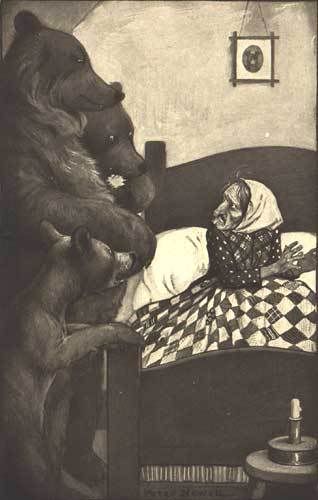
Peter Newell, 1907
and the old woman is repeatedly chastised by the narrator, described as "naughty," "impudent," "bad," with an "ugly, dirty head."
Twelve years later, Joseph Cundall changed the old woman to a girl, because he felt there were already too many old ladies in stories. He named her "Silver Hair," (Treasury of Pleasure Books for Young Children, 1849). Other versions soon followed, with the girl called "Silver Locks" and "Golden Hair," until she was finally deemed "Goldilocks," in Old Nursery Stories and Rhymes, illustrated by John Hassall in 1904.

Jessie Wilcox Smith, 1911
I'm wondering:
Why older women were so frequently portrayed in a negative light in fairy and folk tales. Consider the preponderance of witches, bitches, hags, shrews, evil queens, vixens, stepmothers, and the above-mentioned interloper.
Why young girls were so often used to teach moral lessons.
Why Baby Bear is almost always male, garnering the most sympathy from the reader.
Still, I'm happy with how the bears were portrayed, right from the beginning. Whether all males or a family unit, clothed or unclothed, they were the model of good behavior -- civilized, trusting, even sympathetic and forgiving. That's good, because there are more humanized bears appearing in children's stories than any other animal.
Here are my 3 favorite versions of Goldilocks and the Three Bears, out of the zillions available:
Goldilocks and the Three Bears, retold by Jim Aylesworth, pictures by Barbara McClintock (Scholastic Press, 2003). Traditional retelling with charmingly detailed illustrations rendered in ink, watercolour and gouache.
Goldilocks and the Three Bears, retold and illustrated by James Marshall (Dial, 1988). A Newbery Honor book, tongue-in-cheek version, with Goldie depicted as a deliciously naughty minx.
Goldie and the Three Bears, by Diane Stanley (HarperCollins, 2003). An original modernized take on the classic, with a more sympathetic Goldie and a new ending, which finally absolves Goldie of her longstanding cowardice.
Oh, Christopher says it's time for breakfast.
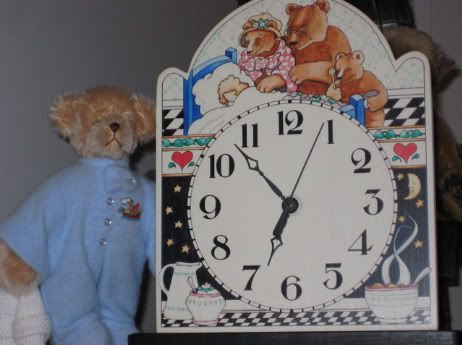
Off to make some porridge.

Warning: Do not leave your bowl unattended.
Visit surlalunefairytales.com for more history, annotations, wonderful old illustrations, and modern interpretations of the tale.
Here's an animated Three Bears to delight the child within.
See all the Teddy Bear and Friends Picnic posts here.
Blog: jama rattigan's alphabet soup (Login to Add to MyJacketFlap)
JacketFlap tags: irving and muktuk, daniel pinkwater, teddy bear picnic, Add a tag
"All my books were easy to write -- doesn't it show?"
~ Daniel Pinkwater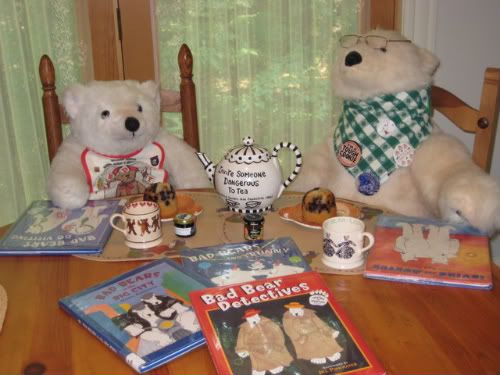
Snowball and Ursula talk PInkwater over blueberry muffins and tea.
How could I not like Daniel Pinkwater?
Whenever I see his name I smile. I was thinking how this is a strange, conditioned response. I don't know how or why it happened. Sure, he's written around 100 books. And to be honest, it's not like I've read dozens and dozens of them. I've read maybe ten. But they got to me. So much so, that whenever I see his name on a book, I put my Ugawawa mocassins on the wrong feet, step slightly to the left of center, and shift into giggle-and-snort mode. I just know it's going to be good.
Hello. How could I not like a man who writes about polar bears and blueberry muffins?
So far, there are five titles in the Irving and Muktuk, Bad Bears, picture book series (ages 5-8). Trust me. This 9-foot tall pair with slitty, sneaky side eyes and galompo feet will have you rooting for them after the first page. Their main crime? Well, they do cheat each other at cards. But mostly they are motivated by the quest for muffins and more muffins, which results in questionable behavior, like, um, stealing.
In the first book, Irving and Muktuk: Two Bad Bears (Houghton Mifflin, 2001), we are introduced to the arctic town of Yellowtooth, which holds a Blueberry Muffin Festival every New Year. After Officer Bunny sees the bears trying to break into the muffin warehouse, he lures them into his station wagon, and has them airlifted by helicopter far above the Arctic Circle. The following New Year, the duo returns to Yellowtooth disguised as very large penguins. They are airlifted again and return three more times with different schemes, until Officer Bunny finally makes arrangements to have them relocated to the Bayonne Zoo. Still, one can't help but admire these almost-masters of disguise.
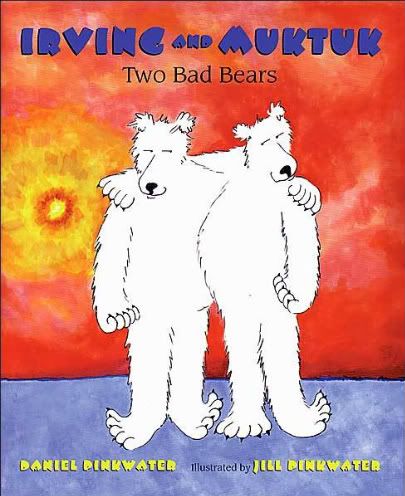
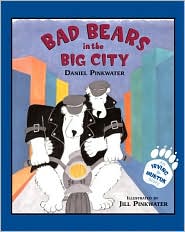
In each book, Pinkwater pulls our emotional strings, as we watch these master manipulators at work. The narratives have a mock serious tone, fueled by Pinkwater's signature sense of humor, which can only be described as understated, wry, droll, and huh? When paired with Jill Pinkwater's bright felt pen and ink illustrations, the result is irresistible.
But it's not just an exercise in wackiness. There's something very endearing about two polar bears lying on boxes of peas in the frozen foods section of the supermarket. Something heartwarming about two large, furry heads resting on matching green pillows. Something ingenious about two bears able to disguise themselves as furry muffins. Or the fact that bad as they are, huge as they are, they can be transformed into models of good behavior by a chastizing little bunny.
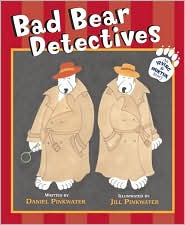
This blend of guile and vulnerability makes Irving and Muktuk very accessible to young readers. They will admire the bears' craftiness, laugh at their silliness, totally understand their hurts and fears, and above all, embrace their badness. Just the type of thing to make the parental units squirm. Isn't one of the biggest frustrations of childhood being misunderstood?
And if you fear that your little ones will growl for more after devouring these five books, rest assured that Mr. Pinkwater has already seen to that -- a series of picture books about Larry, another polar bear who is Roy's brother. Irving and Muktuk appear in these stories, too, but never steal the spotlight from Larry, who is busy playing bongos, dancing ballet, and eating ice cream.


I was thinking about how Daniel Pinkwater has influenced my own writing. I have a tendency to dwell in school teacher mode -- to be adult, logical and politically correct. This comes from wanting to be taken seriously, I suppose, to feel like I'm part of the group. The creative side of me always longs to do just the opposite, and whenever I read a Pinkwater book, I am reminded about the importance of pleasing the child within. He once said:
I imagine a child. That child is me. I can reconstruct and vividly remember portions of my own childhood. I can see, taste, smell, feel, and hear them. Then what I do is, not write about that kid or about his world, but start to think of a book that would have pleased him.
Well, he's obviously doing something right. Should I send him some muffins?

For more about Daniel Pinkwater, visit his website. Not to be missed are two food-related pieces, The Ratatouille Diet, and The Infamous Chicago Hot Dog Commentary. You probably know that he also reads and discusses children's books on NPR's Weekend Edition with Scott Simon.
Andrea and Mark have a podcast interview with him at Just One More Book, along with reviews of several Pinkwater books.
Jules of Seven Impossible Things Before Breakfast reviews Irving and Muktuk Go Visiting (Houghton Mifflin, 2007), along with lots of bear books by other authors here and here.
Finally, Adrienne of What Adrienne Thinks About That, wonders why more people aren't talking about Irving and Muktuk, here.
Oh, and if, by now, you simply MUST have some blueberry muffins, my recipe can be found here!
Blog: jama rattigan's alphabet soup (Login to Add to MyJacketFlap)
JacketFlap tags: david lubar, margo rabb, little willow, jen robinson, sara lewis holmes, teddy bear picnic, finding wonderland, Add a tag
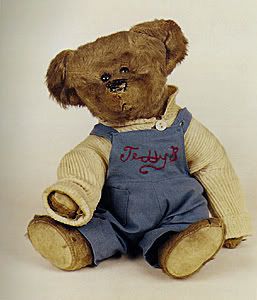
Here are some random tidbits for your picnic basket: First, thank you thank you thank you to Tarie of Into the Wardrobe for awarding alphabet soup a 2008 Brilliante Weblog Premio! I am humbled and honored to be mentioned in the same list as Just One More Book, Brooklyn Arden, and Bloomabilities.
First, thank you thank you thank you to Tarie of Into the Wardrobe for awarding alphabet soup a 2008 Brilliante Weblog Premio! I am humbled and honored to be mentioned in the same list as Just One More Book, Brooklyn Arden, and Bloomabilities. Have you read Marjorie Coughlan's fabulous interview with Jen Robinson over at papertigers.org? Lots of insight and inspiration, with Jen explaining why books, reading, and literacy mean so much to her and what she hopes to accomplish with her fabulous blog, Jen Robinson's Book Page. I am totally blown away by her commitment and dedication.
Have you read Marjorie Coughlan's fabulous interview with Jen Robinson over at papertigers.org? Lots of insight and inspiration, with Jen explaining why books, reading, and literacy mean so much to her and what she hopes to accomplish with her fabulous blog, Jen Robinson's Book Page. I am totally blown away by her commitment and dedication. Make sure to read this post about writing YA by tadmack at Finding Wonderland. You probably know there is a lot of discussion going on in the kidlit blogosphere right now about the stigma YA literature seems to carry in the publishing world. Many bloggers are responding to a recent New York Times article by Margo Rabb, "I'm Y.A., and I'm O.K.," including LJ's Little Willow (
Make sure to read this post about writing YA by tadmack at Finding Wonderland. You probably know there is a lot of discussion going on in the kidlit blogosphere right now about the stigma YA literature seems to carry in the publishing world. Many bloggers are responding to a recent New York Times article by Margo Rabb, "I'm Y.A., and I'm O.K.," including LJ's Little Willow (![]() slayground) and David Lubar (
slayground) and David Lubar (![]() davidlubar).
davidlubar).
Colleen Mondor is rounding up other reactions and opinions at Chasing Ray. She has also designated this week as a time for everyone to post about any issues or concerns they have about children's and young adult publishing, so check back every day for updates. Interesting discussion about verse novels in the comments of this recent Poetry Friday post by Sara Lewis Holmes (Read*Write*Believe). I especially liked David Elzey's comment, written from the POV of a 13-year-old boy.
Interesting discussion about verse novels in the comments of this recent Poetry Friday post by Sara Lewis Holmes (Read*Write*Believe). I especially liked David Elzey's comment, written from the POV of a 13-year-old boy.
Have a great week!
Blog: jama rattigan's alphabet soup (Login to Add to MyJacketFlap)
JacketFlap tags: teddy bear picnic, world's most expensive teddy bear, Add a tag
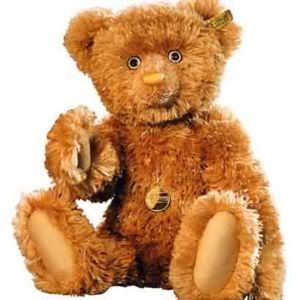
Maker: Steiff (125th Anniversary Commemoration)
Description: Solid gold mouth, gold thread fur, diamond and sapphire eyes
Edition: Limited to 125 pieces
Price: approximately $84,000
More about him here.
Blog: jama rattigan's alphabet soup (Login to Add to MyJacketFlap)
JacketFlap tags: teddy bear picnic, honey spice cake, loggins and messina, house at pooh corner, Add a tag
"'What do you like doing best in the world, Pooh?'
'Well,' said Pooh, 'what I like best . . . ' and then he had to stop and think. Because although Eating Honey was a very good thing to do, there was a moment just before you began to eat it which was better than when you were, but he didn't know what it was called." ~ from The House at Pooh Corner, by A.A. Milne

Even though the work week is almost over, right about now you may have a little sinking feeling.
Not to worry, we've got just the thing, courtesy of our friend Pooh -- Honey Spice Cake, from his very own cook book!
Quick and easy to prepare, perfect for elevenses, afternoon tea, dessert, and of course, picnics, this little treat is sure to please. Just don't forget to share.
HONEY SPICE CAKE
(makes 24 squares) 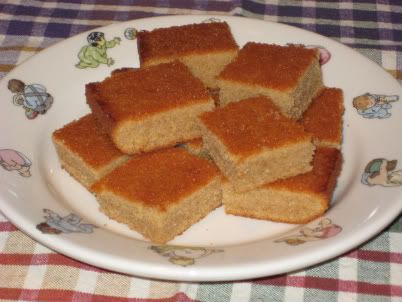
7 oz. (or 7 rounded tablespoons) self rising flour
1 level tsp mixed spice (I used pumpkin pie spice)
1/2 level tsp ground ginger
1/2 level tsp ground cinnamon
5 oz. butter
4 oz. (or 4 rounded tablespoons) soft brown sugar
6 oz. (or 3 rounded tablespoons) honey
2 eggs
1 T water
Preheat oven to 350 degrees F.
Sift together the flour, mixed spice, ginger and cinnamon on to a square of greaseproof paper or foil and set aside.
Measure the butter or margarine, and the sugar, honey, and water into a saucepan. Place the pan over a low heat and stir with a wooden spoon until the fat has melted. Do not allow to boil. Draw the pan off the heat and allow to cool for about ten minutes.
Using a wooden spoon, beat the eggs into the honey mixture one at a time. Tip in the flour mixture all at once. Stir until it has blended and beat thoroughly.
Pour into the prepared cake tin (7" x 11" x1", greased and lined with parchment paper), and spread evenly. Place in the centre of the preheated oven and bake for 30-35 minutes or until the cake is well risen.
Remove the cake from the oven using oven gloves. Loosen the sides of the cake with a knife and turn out. Allow to cool and then cut in squares.
~ Adapted from The Pooh Cook Book by Katie Stewart (Methuen, 1971).



To read my Poetry Friday post featuring A.A. Milne's poem, "Teddy Bear," which first introduced Pooh to the world, and to find out how I started collecting bears, click here.
Mary Lee at A Year of Reading recently visited Ashdown Forest, site of the Poohsticks bridge!
**For the ULTIMATE Honey Spice Cake experience, watch this video. Kenny Loggins wrote this song while still in high school. He and Jim are sweeter than hunny!
Blog: jama rattigan's alphabet soup (Login to Add to MyJacketFlap)
JacketFlap tags: teddy bear picnic, rupert bear, paul mccartney, Add a tag
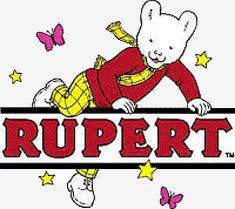
Before Paddington, there was Pooh. And before Pooh, there was Rupert!
Hats off today to Rupert Bear, one of the oldest and most enduring humanized bear characters in children's fiction. What, you say you don't know him? I didn't either, until I got into bear collecting, and learned that Rupert is actually 6 years older than Pooh, and 8 years older than Mickey Mouse. This also makes him the longest running children's comic character in history.
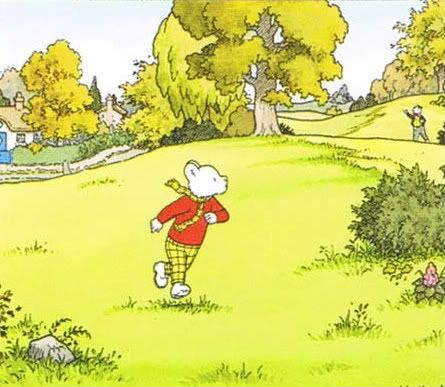
"Nutwood in Spring," by John Harrold
Now, if I had grown up in the UK, Rupert would have been a household name. He was created by children's book illustrator Mary Tourtel, and first appeared in a Daily Express comic strip in 1920. Mary's husband, a night editor for the Express, wrote the captions for Mary's pictures. The stories took place in the idyllic English village of Nutwood with Rupert and his friends Bill Badger, Pong Ping, Algy Pug, and Edward Trunk, among others, and included adventures with fairies, pirates, unicorns, wizards, knights, crooks, and magic carpets.
"Flight of the Firebird," by John Harrold
Though Mary created Rupert, we must credit Alfred Bestall (who stepped in after Mary retired), with improving the stories and plots and creating the classic Rupert story format familiar today. This enables readers of various ages to appreciate the stories on 4 levels -- by following the summary headers of the strips, by reading the two line verse captions under each frame, by reading the prose narration of the story, or by simply enjoying the pictures in sequence.
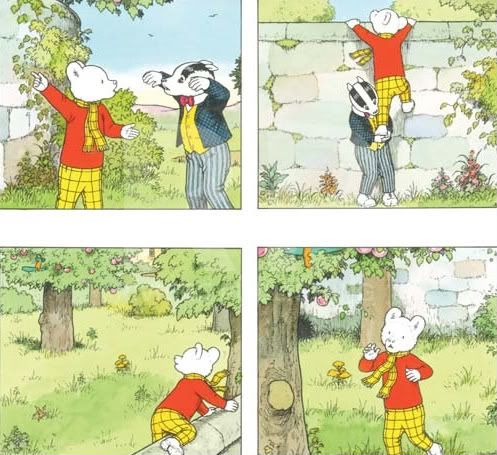
"The Mysterious Garden," by John Harrold
Bestall also created additional art for the Rupert Annuals, first appearing in 1936 and continuing today. After Bestall retired at the age of 90 in 1973, several other artists have taken up the mantle, including John Harrold, whose illustrations are featured in this post. The Annuals have enabled children to fully embrace Rupert, whose stories, unlike those about Pooh, take place in a contemporary setting, complete with a cosy home and supportive parents.
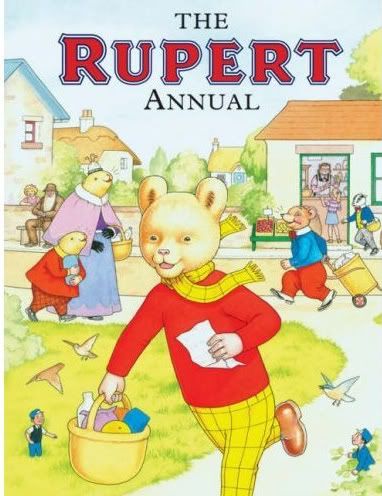
Rupert Bear Annual No. 72, Egmont Books, Ltd., 2007
American children may know Rupert through his animated television series (sample Rupert cartoon here), which has aired on Nickelodeon and CBS. A new series, "Follow the Magic," features a decidedly younger Rupert, who, strangely enough, looks more like Pooh. As far as I know, this series only airs in Great Britain.
But guess who else loves Rupert? In 1984 Sir Paul McCartney and Geoff Dunbar created a short animated film called "Rupert and the Frog Song," which features Paul's "We All Stand Together," (also included on his Pipes of Peace album). After noting that his own children loved Rupert as much as he did, Paul dug out his old Rupert Annuals and set to work. He initially wrote music for a full-length film, but plans were shelved. Still, the short film won a British Academy Award, and the video of "We All Stand Together" won a Grammy in 1986 for Best Music Video -- Short Form. (Watch it here.)
Rupert will be 88 in November, and shows no signs of slowing down. With over 50 million books sold, an appearance every morning in the Daily Express, a much anticipated Annual published every year, as well as prints, videos, DVD's, and assorted memorabilia for sale, Rupert's longstanding, continuous appeal to young and old alike is definitely something to cheer about. Hip hip hooray!
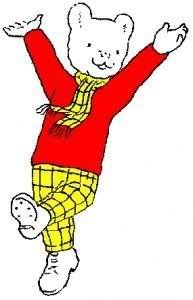
All Rupert Bear images posted by permission, © Entertainment Rights Distribution, Ltd./Express Newspapers 2007. All rights reserved.
*The John Harrold images included in this post, as well as several others, are available as signed, limited edition glicee prints through Art of Illustration.



